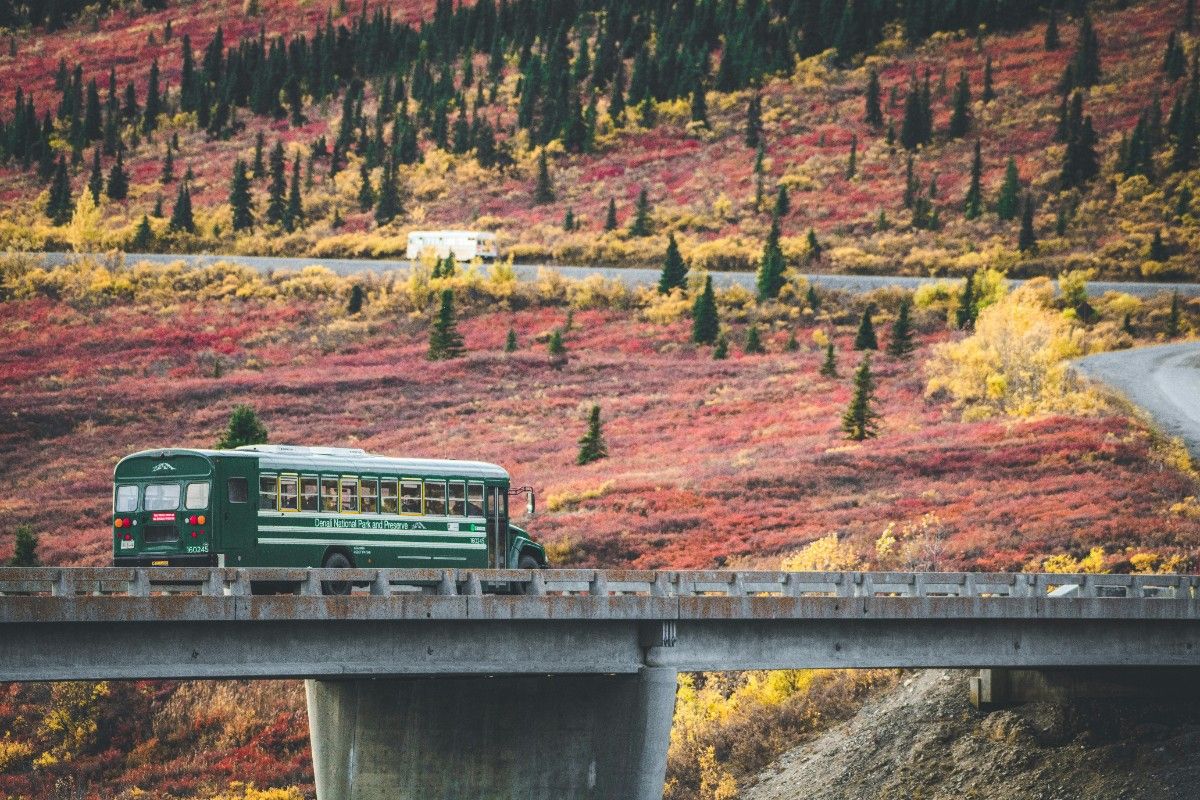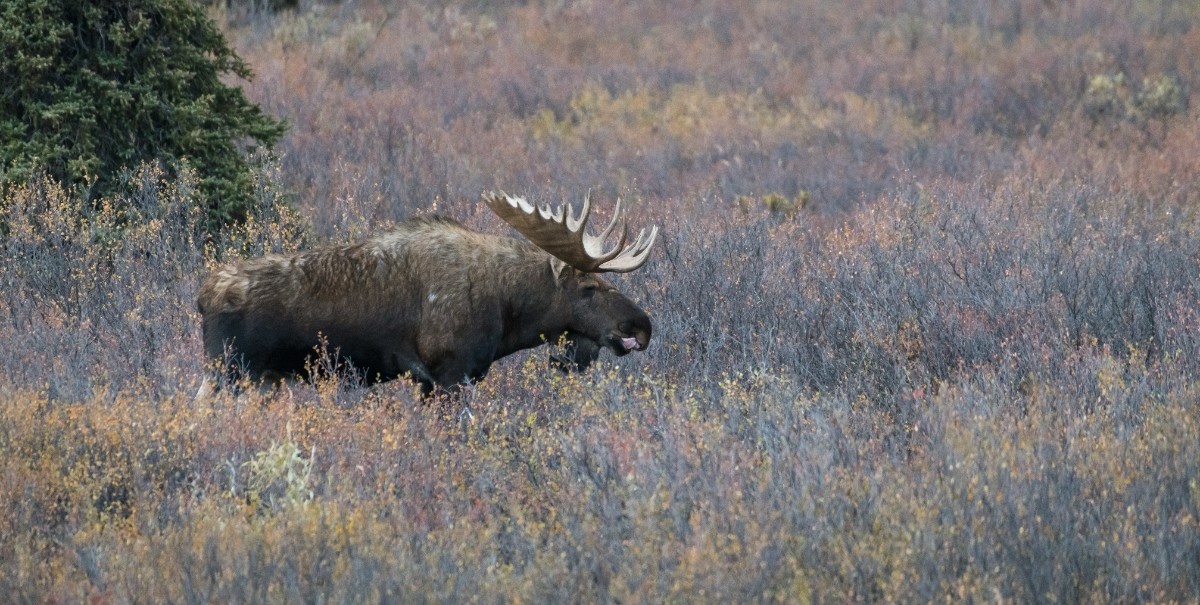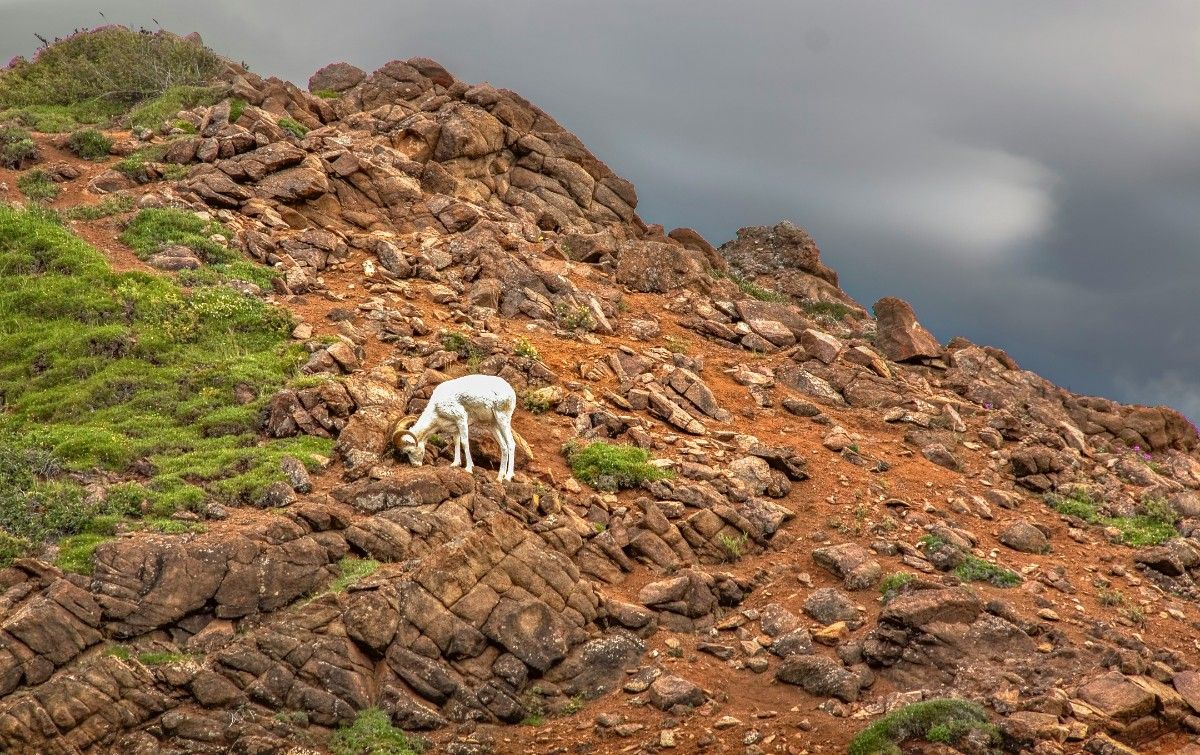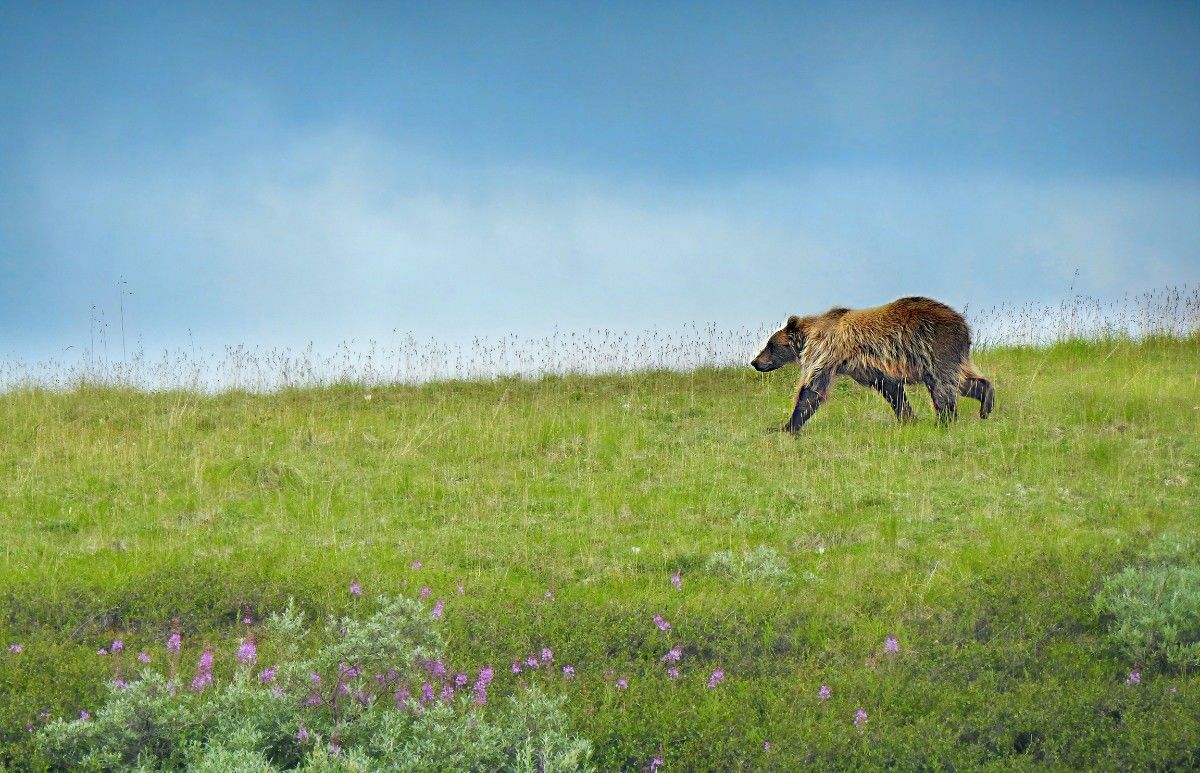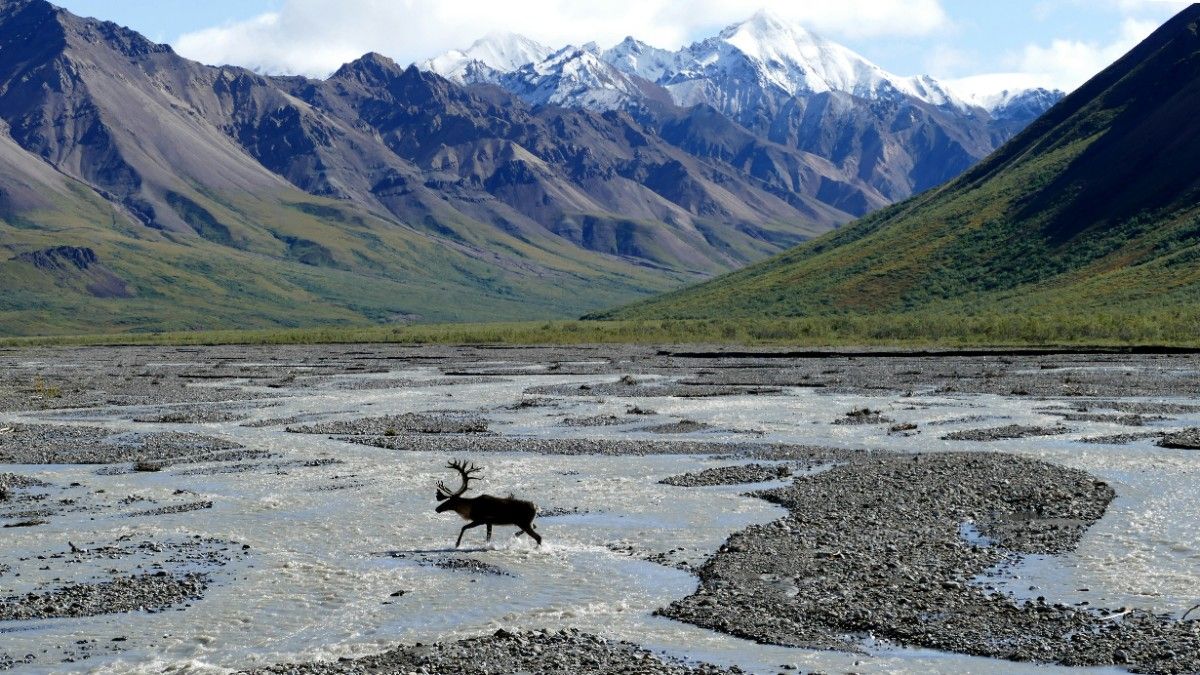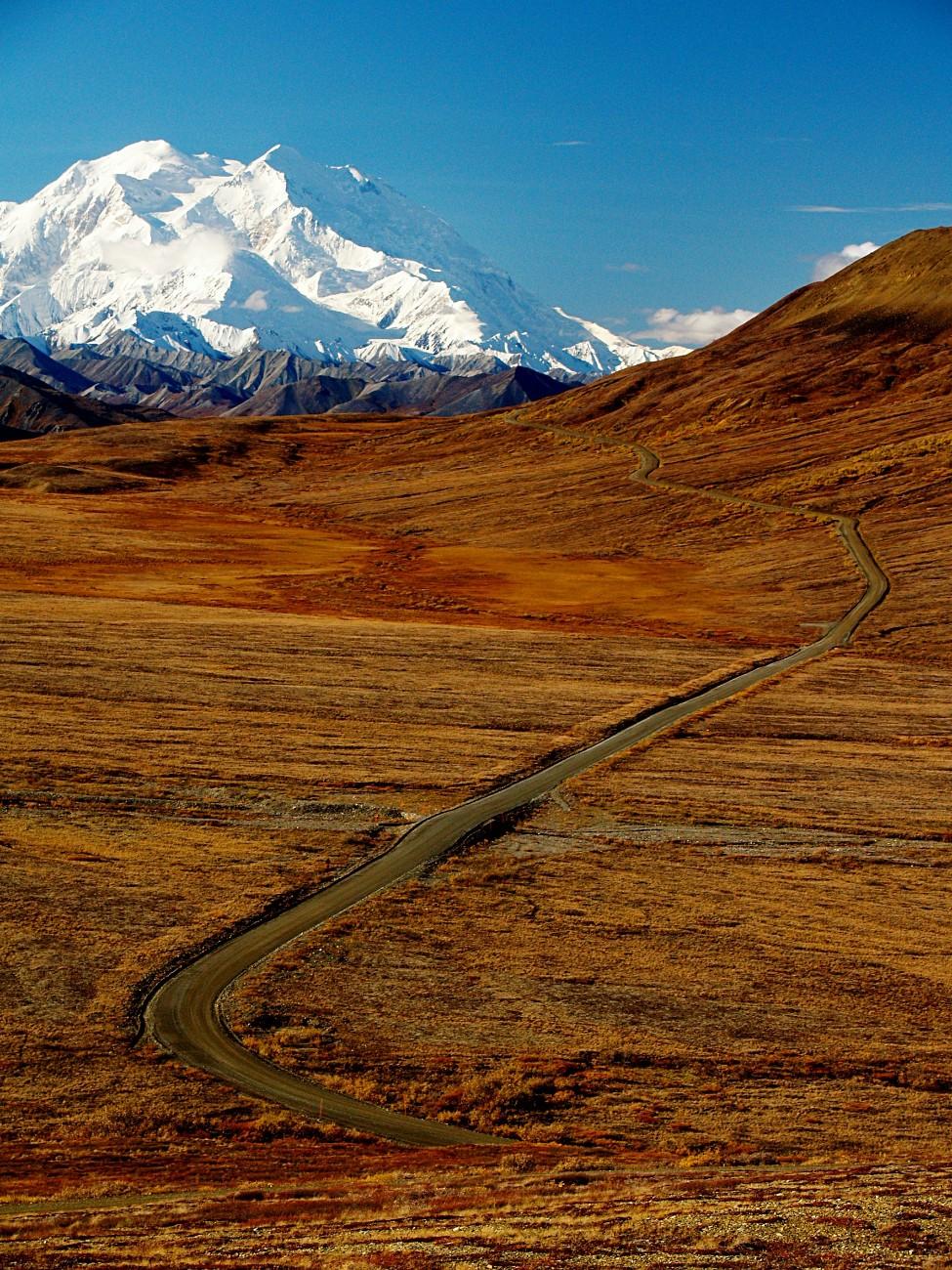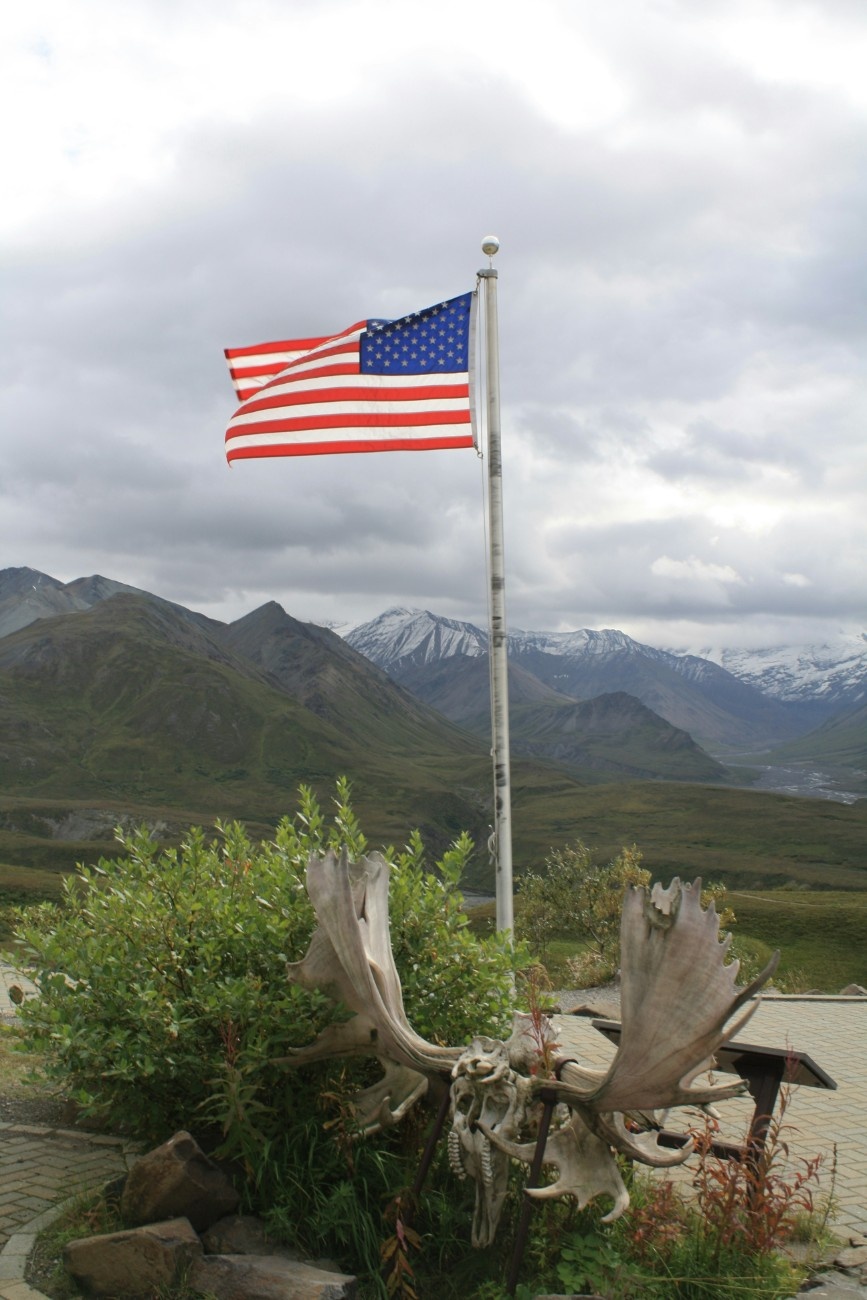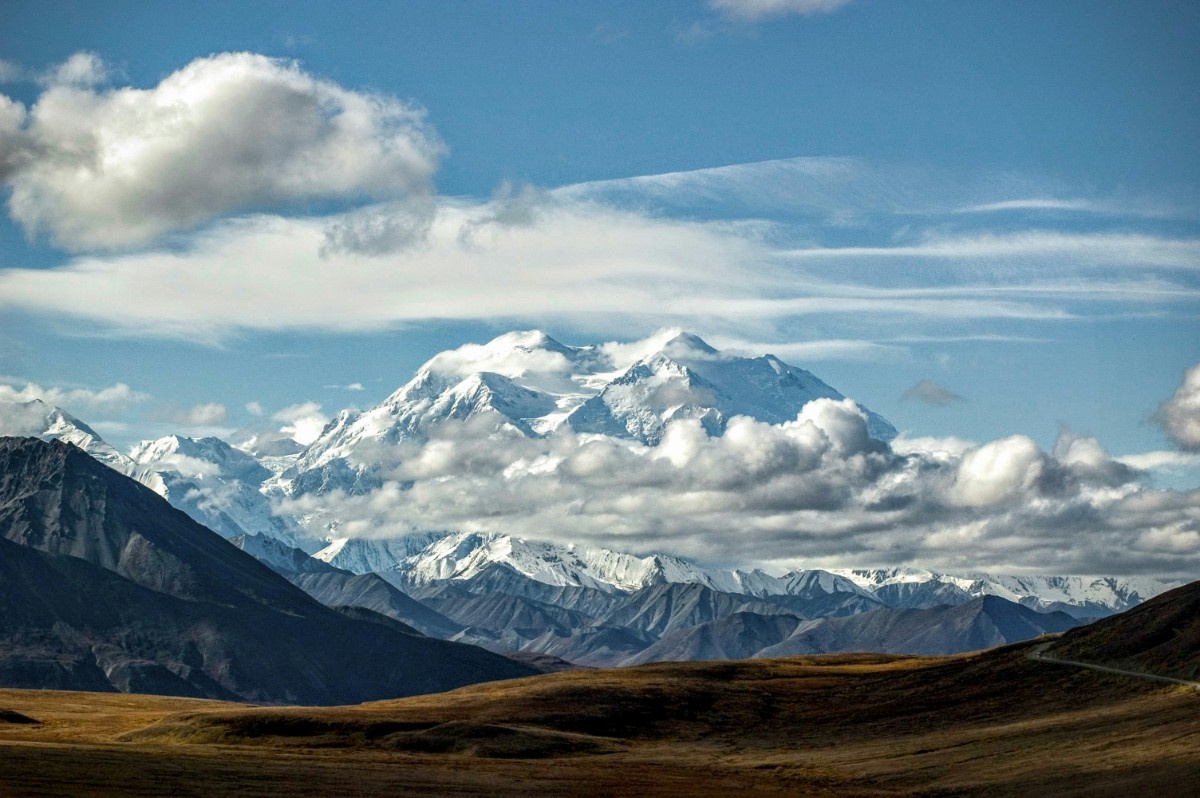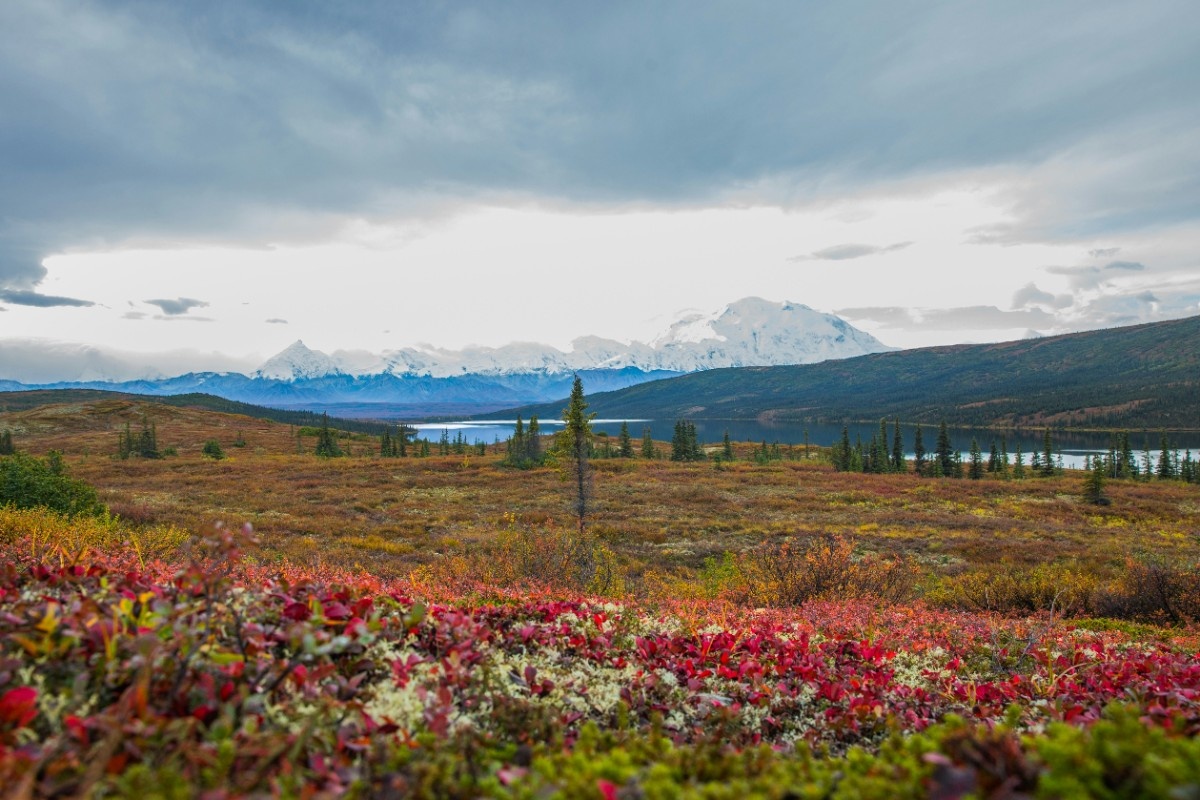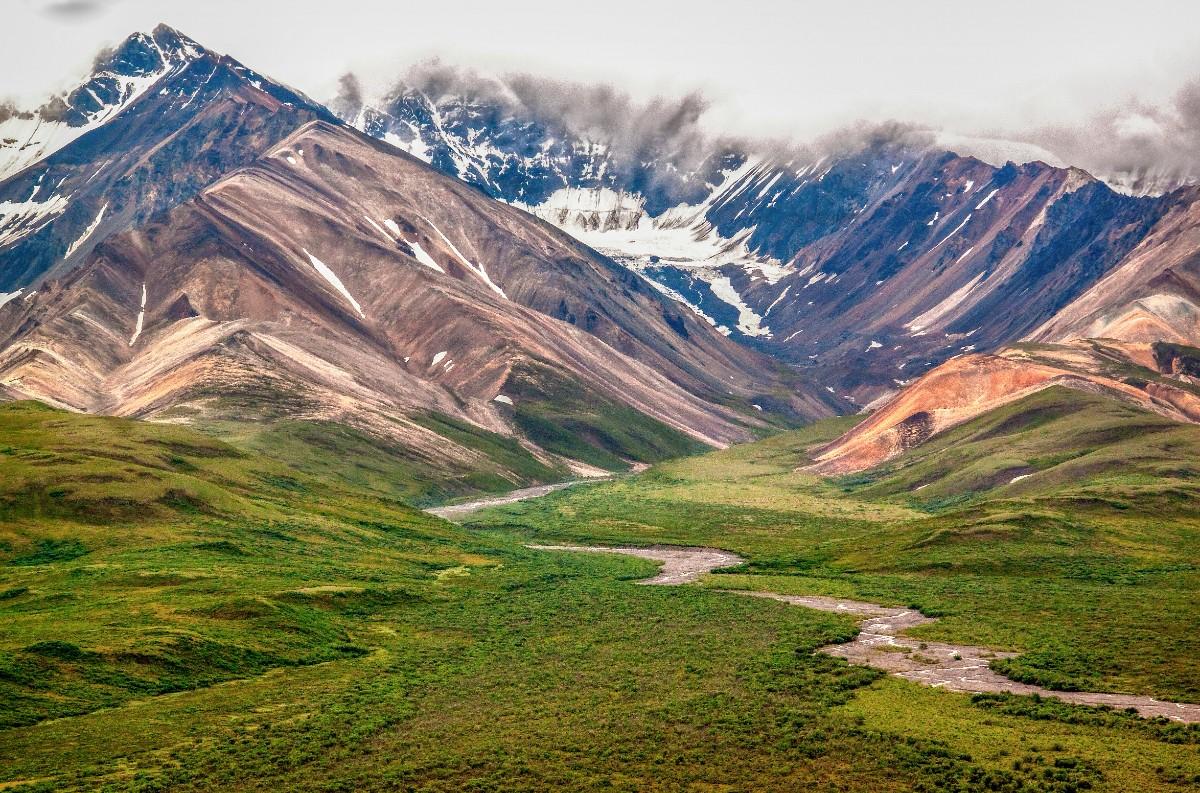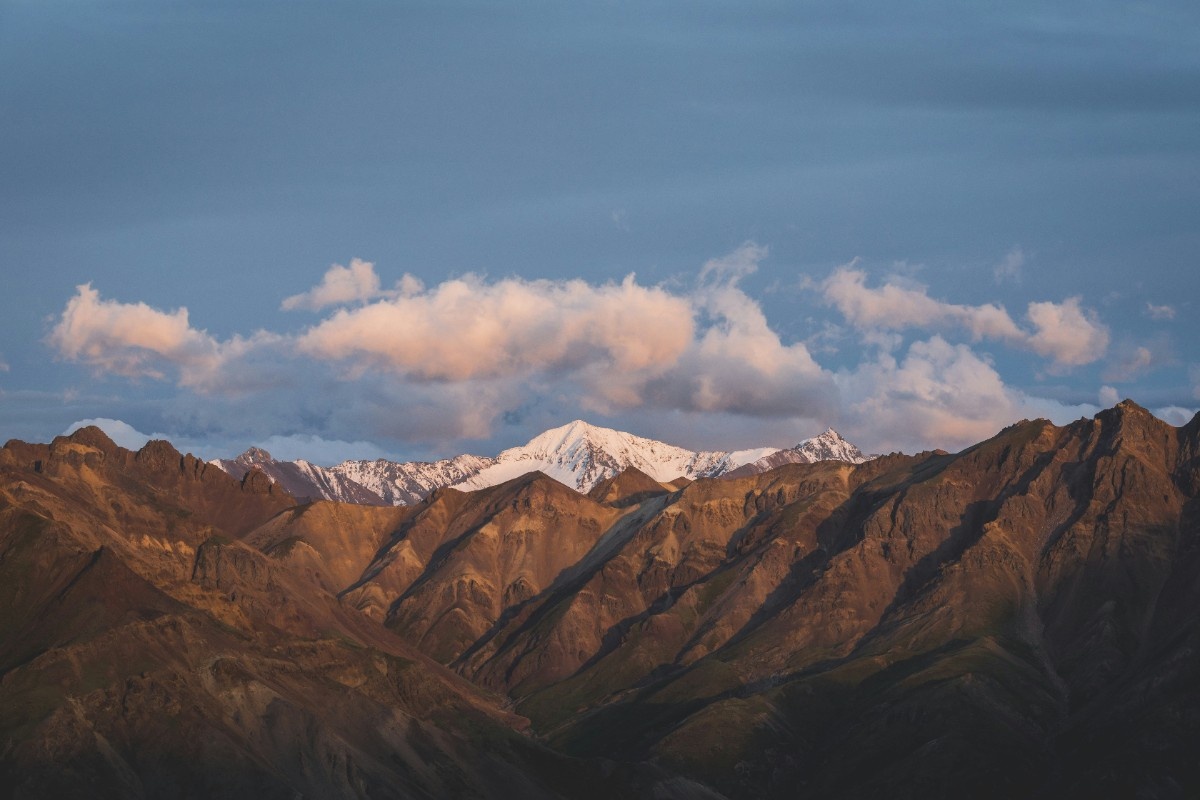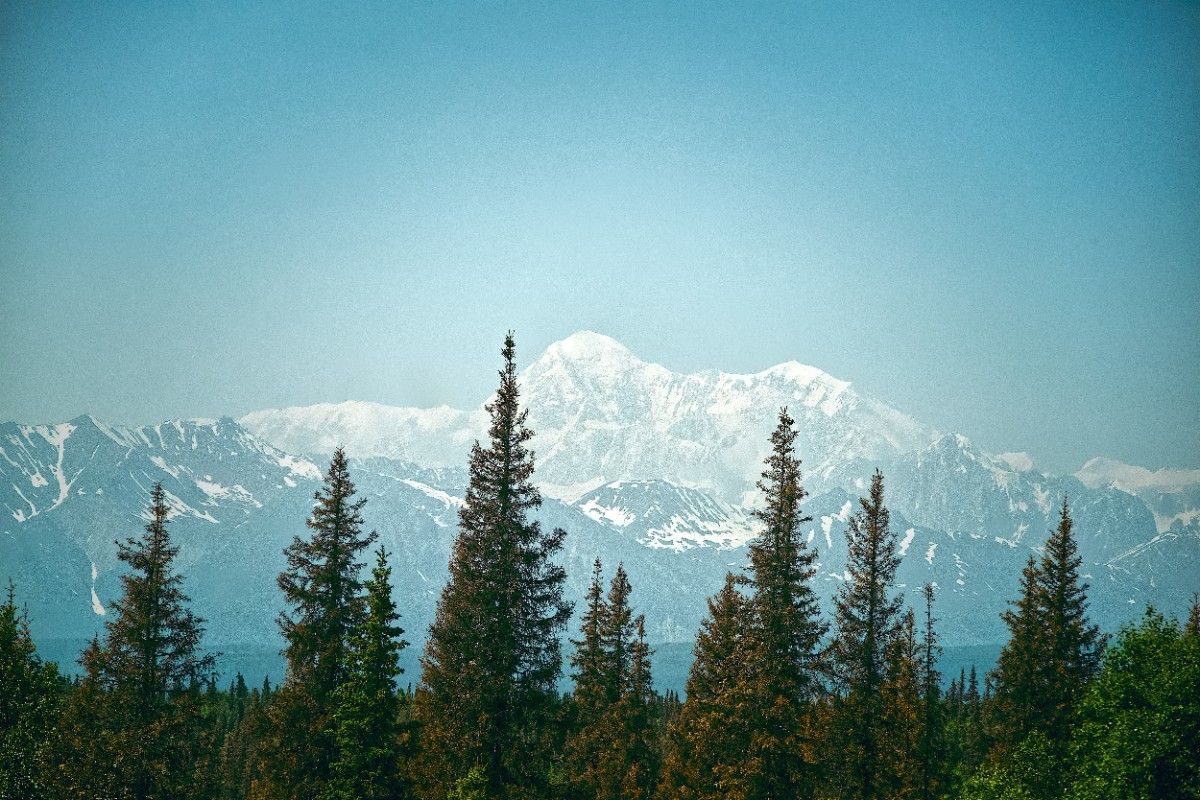Introduction to Denali National Park and Preserve
Overview of Denali National Park and Preserve
Denali National Park and Preserve, located in the heart of Alaska, is a vast wilderness that spans over 6 million acres. The park is home to an array of breathtaking natural wonders, including the iconic Denali, formerly known as Mount McKinley, which stands tall at 20,310 feet (6,190 metres), making it the highest peak in North America. The park's rugged terrain, diverse wildlife, and stunning vistas have earned it a well-deserved spot on many travellers' bucket lists.
Established in 1917 as Mount McKinley National Park, the park was later expanded and renamed Denali National Park and Preserve in 1980. The primary goal of the park is to protect the region's unique ecosystem and preserve its natural beauty for future generations. The park's remote location and limited accessibility add to its allure, offering visitors a true escape from the modern world.
Geographical Features and Ecosystems
Denali National Park and Preserve encompasses a wide range of geographical features and ecosystems. The park's landscape is characterised by towering mountains, expansive glaciers, pristine forests, and vast tundra. The Alaska Range, which runs through the park, is a testament to the immense geological forces that have shaped the region over millions of years.
The park is also home to a diverse array of plant and animal species. The varied terrain, ranging from lowland taiga forests to high-alpine tundra, supports a complex ecosystem that sustains an impressive variety of flora and fauna. Visitors to the park can observe majestic grizzly bears, elusive wolves, sure-footed Dall sheep, and vibrant wildflowers, among many other species.
Visiting Denali National Park and Preserve
Visiting Denali National Park and Preserve is an unforgettable experience that offers endless opportunities for adventure, wildlife viewing, and nature appreciation. The main entrance to the park is located along the George Parks Highway, approximately 240 miles (386 kilometres) north of Anchorage and 120 miles (193 kilometres) south of Fairbanks.
Upon arriving at the park, visitors are greeted by the Denali Visitor Centre, which serves as a hub for information, exhibits, and ranger-led activities. From here, adventurers can embark on a journey of discovery, exploring the park's diverse landscapes and encountering its remarkable wildlife.
Whether you choose to take a guided hike, join a bus tour along the park road, or venture into the backcountry for a multi-day camping trip, Denali National Park and Preserve promises an unforgettable experience that will leave you in awe of the raw beauty and untamed wilderness of this remarkable corner of the world.
The History and Cultural Heritage of Denali National Park
Alaska Native Peoples and Denali
Long before the establishment of Denali National Park and Preserve, the area was inhabited by various Alaska Native groups, including the Dena'ina, Ahtna, and Koyukon Athabascan people. These indigenous communities have called the region home for generations, developing a deep connection to the land and its resources.
The Athabascan people refer to the Denali area as "Deenaalee," meaning "the tall one" in their language. They have relied on the land for subsistence, hunting caribou, moose, and other game, as well as gathering berries and plants. The Athabascans have also developed a rich cultural tradition, with stories, songs, and dances that celebrate their connection to the land and its wildlife.
Early Exploration and the Naming of Denali
The first recorded exploration of the Denali region by Westerners dates back to 1794, when British explorer George Vancouver spotted the towering peak from a distance during his voyage along the Alaskan coast. However, it wasn't until the late 19th century that the area began to attract more attention from outsiders.
In 1896, prospector William Dickey and his partner, John Monks, were among the first Westerners to explore the Denali area in search of gold. Although they found little gold, Dickey was so impressed by the majestic peak that he named it Mount McKinley, after then-presidential candidate William McKinley. The name remained in use for over a century, until it was officially changed back to Denali in 2015, following decades of advocacy by Alaska Native groups and other supporters.
Park Establishment and Expansion
As interest in the region grew, so did efforts to protect its natural wonders. In 1917, Mount McKinley National Park was established, encompassing 2 million acres around the base of the mountain. The park's creation was largely driven by the efforts of conservationist Charles Sheldon, who recognised the need to protect the area's wildlife and wilderness from the growing threats of hunting and development.
Over the years, the park underwent several expansions and name changes. In 1980, as part of the Alaska National Interest Lands Conservation Act, the park was expanded to its current size of over 6 million acres and renamed Denali National Park and Preserve. This expansion not only protected a larger area of wilderness but also recognised the cultural significance of the region to Alaska Native communities.
Cultural Heritage and Preservation
Today, Denali National Park and Preserve continues to honour and celebrate the rich cultural heritage of the Alaska Native people. The park works closely with local communities to preserve and interpret their cultural traditions, and visitors can learn about the long-standing connection between the Athabascan people and the Denali landscape through ranger-led programs, exhibits, and cultural demonstrations.
The park also has a fascinating history of exploration, mountaineering, and scientific research. One of the most famous chapters in Denali's history is the story of the first successful ascent of the mountain in 1913 by a team led by Hudson Stuck and Harry Karstens, along with Alaska Natives John Fredson and Esaias George. Their achievement marked a significant milestone in the history of mountaineering and helped establish Denali as a premier destination for climbers worldwide.
By understanding and appreciating the history and cultural heritage of Denali National Park and Preserve, visitors can gain a deeper understanding of the importance of protecting and preserving this remarkable wilderness for generations to come.
Iconic Wildlife of Denali National Park
Bears of Denali
One of the most iconic and captivating wildlife species found in Denali National Park is the bear. The park is home to both grizzly bears and black bears, with grizzly bears being more commonly seen. These majestic creatures are a symbol of the Alaskan wilderness and a major draw for visitors to the park.
Grizzly bears, also known as brown bears, are the larger of the two species and can weigh up to 1,000 pounds. They are omnivores, feeding on a variety of plants and animals, including berries, roots, fish, and small mammals. In the fall, grizzly bears can often be seen feasting on spawning salmon in the park's rivers and streams, storing up fat reserves for their winter hibernation.
Black bears, though less frequently spotted in Denali, are also an important part of the park's ecosystem. They are smaller than grizzly bears and have a more varied diet, which includes fruits, nuts, and insects in addition to meat.
Visitors to Denali National Park have the opportunity to observe these incredible animals in their natural habitat, but it is crucial to maintain a safe distance and follow park regulations to ensure the safety of both bears and humans.
Wolves of Denali
Another iconic species found in Denali National Park is the wolf. These elusive predators play a vital role in the park's ecosystem, helping to maintain balance by regulating populations of their prey species, such as caribou and moose.
Wolves are highly social animals, living in packs that work together to hunt and raise their young. A typical wolf pack in Denali consists of an alpha pair, their offspring, and other subordinate adults. The pack dynamics and hierarchies are fascinating to observe and study.
Although wolves are more difficult to spot than bears due to their wary nature, visitors who are lucky enough to catch a glimpse of these magnificent creatures are treated to an unforgettable wildlife experience. The haunting howls of wolves echoing through the park's valleys and mountains add to the wild and untamed atmosphere of Denali.
Caribou and Dall Sheep
Denali National Park is also home to two iconic herbivores: caribou and Dall sheep. These species have adapted to the harsh conditions of the Alaskan wilderness and are an integral part of the park's ecosystem.
Caribou, also known as reindeer, are large members of the deer family. They are well-suited to life in the subarctic, with hollow hair that provides excellent insulation against the cold and wide, flat hooves that enable them to navigate snowy terrain. Caribou are often seen grazing on the park's tundra, feeding on a variety of plants and lichens.
Dall sheep, on the other hand, are known for their ability to navigate steep cliffs and rocky outcrops with ease. These sure-footed ungulates have specialised hooves and agile bodies that allow them to thrive in the rugged, mountainous terrain of Denali. Visitors can often spot Dall sheep perched on high ridges or grazing on the slopes of the park's mountains.
Smaller Mammals and Birds
In addition to the larger, more iconic species, Denali National Park is home to a diverse array of smaller mammals and birds. These animals play essential roles in the park's ecosystem and add to the overall biodiversity of the region.
Some of the smaller mammals found in Denali include foxes, lynx, marmots, and pikas. These animals are often more difficult to spot than their larger counterparts but are no less important to the park's ecological balance.
Denali is also a haven for birdwatchers, with over 160 species recorded within the park's boundaries. Notable birds include golden eagles, ptarmigans, and various songbirds. The park's varied habitats, from lush forests to open tundra, provide ample opportunities for bird enthusiasts to observe and photograph a wide range of species.
Scenic Wonders and Landscapes of Denali National Park
Denali: The Centrepiece of the Park
At the heart of Denali National Park lies its most iconic feature: Denali itself. Formerly known as Mount McKinley, this towering peak stands at an impressive 20,310 feet (6,190 metres), making it the highest mountain in North America. The mountain's sheer size and grandeur dominate the landscape, drawing the eye and the imagination of all who behold it.
Denali's snow-capped summit and rugged flanks are a testament to the immense geological forces that have shaped the region over millions of years. The mountain's presence is awe-inspiring, and its ever-changing appearance, from the rosy alpenglow of sunrise to the deep shadows of sunset, captivates visitors and photographers alike.
While climbing Denali is a serious undertaking reserved for experienced mountaineers, visitors can still appreciate its majesty from various viewpoints throughout the park, such as the Eielson Visitor Centre or the Wonder Lake area.
Glaciers and Glacial Valleys
Another defining feature of Denali National Park's landscape is its numerous glaciers and glacial valleys. The park is home to over 1,000 glaciers, including some of the largest and most impressive in North America. These massive rivers of ice have carved the landscape over millennia, creating deep valleys, jagged peaks, and turquoise glacial lakes.
Some of the most notable glaciers in the park include the Kahiltna Glacier, the longest glacier in the Alaska Range, and the Ruth Glacier, which is surrounded by towering peaks and offers a stunning backdrop for backcountry hiking and camping.
Visitors can witness the power and beauty of these glaciers through various means, such as flightseeing tours, guided hikes, or simply admiring them from overlooks along the park road.
Tundra and Taiga Landscapes
Denali National Park is characterised by two distinct landscapes: the tundra and the taiga. These ecosystems are shaped by the harsh subarctic climate and offer unique opportunities for visitors to explore and appreciate the park's natural beauty.
The tundra, found at higher elevations and in areas with permafrost, is a treeless expanse of low-growing vegetation, such as mosses, lichens, and hardy wildflowers. During the brief summer months, the tundra comes alive with vibrant colours as the plants bloom and thrive under the midnight sun. Visitors can hike through the tundra, marvelling at the delicate ecosystem and observing the wildlife that calls it home, such as caribou, Dall sheep, and various bird species.
The taiga, or boreal forest, covers much of the park's lower elevations. This landscape is dominated by coniferous trees, such as spruce and fir, as well as deciduous trees like birch and aspen. The taiga provides habitat for a wide range of animals, including moose, bears, and wolves. Visitors can explore the taiga through hiking trails or by taking a scenic drive along the park road.
Rivers and Waterfalls
Denali National Park is also home to numerous rivers and waterfalls that add to the park's scenic beauty. These water features are not only visually stunning but also play a crucial role in the park's ecosystem, providing habitat for fish and other aquatic species and supporting the growth of vegetation along their banks.
Some of the most notable rivers in the park include the Nenana River, which flows along the park's eastern boundary, and the Toklat River, which is known for its excellent fishing opportunities. The park also boasts several impressive waterfalls, such as the Triple Lakes Falls and the Teklanika Falls, which can be reached via hiking trails.
Visitors can enjoy the park's rivers and waterfalls through various activities, such as rafting, fishing, or simply admiring their beauty from overlooks and trails. These water features add another layer of diversity and wonder to the already stunning landscape of Denali National Park.
Activities and Adventures in Denali National Park
Hiking and Backpacking
One of the most popular activities in Denali National Park is hiking and backpacking. The park offers a wide range of trails suitable for various skill levels, from short, easy nature walks to strenuous, multi-day backcountry treks. Hiking allows visitors to immerse themselves in the park's stunning landscapes, observe wildlife, and experience the true wilderness of Alaska.
Some of the most popular hiking trails in the park include the Savage River Loop, a moderately easy 2-mile trail that offers breathtaking views of the Alaska Range, and the Triple Lakes Trail, a challenging 9.5-mile hike that takes visitors through the heart of the park's wilderness. For those seeking a more immersive experience, Denali offers several multi-day backpacking routes, such as the Kesugi Ridge Trail or the Toklat River Route, which allow hikers to explore some of the park's most remote and pristine areas.
When hiking or backpacking in Denali, it is essential to be well-prepared and follow proper safety guidelines. The park's weather can be unpredictable, and the terrain is often rugged and remote. Hikers should carry appropriate gear, including warm, waterproof clothing, sturdy footwear, and bear-resistant food containers. It is also crucial to familiarise oneself with the park's rules and regulations regarding backcountry camping and wildlife safety.
Wildlife Viewing and Photography
Another major draw for visitors to Denali National Park is the opportunity to observe and photograph the park's iconic wildlife. The park is home to an incredible diversity of animals, including grizzly bears, wolves, caribou, moose, and Dall sheep, among others. Encountering these magnificent creatures in their natural habitat is an unforgettable experience that leaves a lasting impression on visitors.
One of the best ways to view wildlife in Denali is by taking a bus tour along the park road. The park operates several types of buses, including guided tours and transit buses, which allow visitors to access deeper parts of the park while minimising their impact on the environment. Bus drivers and guides are knowledgeable about the park's wildlife and can help spot and identify animals along the way.
For those interested in capturing the beauty of Denali's wildlife through photography, the park offers endless opportunities. From the majestic grizzly bears fishing for salmon in the streams to the graceful Dall sheep navigating the rocky cliffs, the park's animals provide countless subjects for photographers of all skill levels. When photographing wildlife, it is essential to maintain a safe distance, use appropriate lenses, and follow the park's guidelines to ensure the safety of both animals and visitors.
Flightseeing and Aerial Tours
For a truly unique perspective on Denali National Park's vast wilderness, visitors can take to the skies on a flightseeing or aerial tour. These tours, offered by several local companies, provide a bird's-eye view of the park's stunning landscapes, including glaciers, mountains, and expansive tundra. Flightseeing is particularly popular for those hoping to catch a glimpse of the elusive Denali summit, which is often obscured by clouds when viewed from the ground.
One of the most popular flightseeing options is a glacier landing tour, which allows visitors to land on one of the park's majestic glaciers and explore the icy landscape on foot. This once-in-a-lifetime experience provides a unique opportunity to witness the sheer scale and beauty of Denali's glaciers up close.
When choosing a flightseeing or aerial tour operator, it is essential to research and select a reputable company with a strong safety record and experienced pilots. These tours can be expensive, but for many visitors, the unparalleled views and memories are well worth the investment.
Ranger-Led Programs and Educational Activities
For those looking to deepen their understanding and appreciation of Denali National Park's natural and cultural heritage, the park offers a variety of ranger-led programs and educational activities. These programs, which are free or low-cost, provide visitors with the opportunity to learn about the park's ecology, geology, history, and wildlife from knowledgeable park rangers.
Some popular ranger-led activities include guided hikes, such as the Sled Dog Demonstration or the Eielson Stroll, which offer insights into the park's unique features and stories. The park also offers evening programs at various campgrounds and visitor centres, which cover topics ranging from wildlife biology to Alaska Native culture.
In addition to ranger-led programs, the park's visitor centres, such as the Denali Visitor Centre and the Eielson Visitor Centre, offer exhibits, films, and interactive displays that help visitors understand and appreciate the park's natural and human history. These facilities also serve as excellent resources for planning hikes, obtaining backcountry permits, and learning about current park conditions and safety information.
By participating in ranger-led programs and educational activities, visitors can gain a deeper understanding and respect for the incredible wilderness that is Denali National Park, ensuring that they leave the park not only with unforgettable memories but also with a renewed commitment to preserving and protecting this national treasure for generations to come.
Planning Your Visit to Denali National Park
When to Visit
One of the most important considerations when planning a visit to Denali National Park is choosing the right time to go. The park is open year-round, but the main visitor season runs from mid-May to mid-September, when the weather is most favourable and the park's facilities and services are fully operational.
During the summer months, visitors can expect long daylight hours, with the sun often setting well past midnight due to Alaska's northern latitude. This extended daylight allows for ample time to explore the park's trails, observe wildlife, and enjoy the stunning scenery. However, it is essential to note that summer is also the busiest season, with larger crowds and higher prices for accommodations and tours.
For those seeking a more solitary experience or the chance to witness the park's winter beauty, visiting during the shoulder seasons of late spring or early fall can be a rewarding choice. While some facilities may have limited hours or be closed, the park's wilderness remains accessible, and visitors can enjoy the crisp air, changing foliage, and potential for Northern Lights viewing.
Winter visits to Denali are possible but require careful planning and preparation. The park's road is closed beyond the Park Headquarters, and many facilities are shut down. However, visitors can still enjoy activities such as cross-country skiing, dog sledding, and snowshoeing, while marvelling at the park's snow-covered landscapes and the stillness of the winter wilderness.
Getting There and Getting Around
Denali National Park is located in the interior of Alaska, approximately 240 miles north of Anchorage and 120 miles south of Fairbanks. The park can be accessed by car, bus, or train, depending on the visitor's preferences and travel plans.
For those driving to the park, the main entrance is located along the George Parks Highway (Alaska Highway 3), which connects Anchorage and Fairbanks. Visitors can also take the Alaska Railroad from either city, which offers a scenic and relaxing way to reach the park. The train stops at the park's entrance, where visitors can transfer to buses or shuttles to explore further.
Once inside the park, private vehicles are only allowed on the first 15 miles of the 92-mile-long Denali Park Road. To access the remainder of the road and the park's interior, visitors must use the park's bus system or join a guided tour. The park offers several types of buses, including transit buses, which provide transportation to various points along the road, and tour buses, which offer narrated trips and interpretive services.
Visitors can also explore the park on foot, with numerous hiking trails accessible from the park road and various campgrounds. For those seeking a more immersive wilderness experience, Denali offers opportunities for backcountry camping and multi-day backpacking trips, which require permits and careful planning.
Accommodations and Lodging
Denali National Park offers a range of accommodations to suit various preferences and budgets. Within the park, visitors can choose from six campgrounds, which offer a mix of tent and RV sites, as well as some with facilities such as flush toilets and potable water. These campgrounds are popular and can fill up quickly during peak season, so advance reservations are recommended.
For those seeking more comfort, the park also features several lodges, including the Denali Park Village, the Kantishna Roadhouse, and the McKinley Chalet Resort. These lodges offer a variety of room types, from simple cabins to more luxurious suites, as well as amenities such as restaurants, gift shops, and guided activities.
Outside the park boundaries, visitors can find numerous lodging options in the nearby communities of Healy and Cantwell. These range from budget-friendly motels and hostels to vacation rentals and full-service hotels. Many of these accommodations offer shuttle services to the park entrance and can help arrange tours and activities.
When selecting accommodations, it is essential to book well in advance, especially during the peak summer season, as options can fill up quickly. Visitors should also consider factors such as proximity to the park entrance, access to transportation and amenities, and their desired level of comfort and privacy.
What to Pack and Bring
Packing for a visit to Denali National Park requires careful consideration of the park's rugged and remote nature, as well as the potential for rapidly changing weather conditions. No matter the season, visitors should come prepared with warm, waterproof layers, sturdy hiking boots, and sun protection.
Other essential items include a daypack, water bottles, snacks, and bear-resistant food containers for those planning to hike or camp in the backcountry. Visitors should also bring a map, compass, and navigation tools, as well as a first aid kit and any necessary medications.
For wildlife viewing and photography, visitors may want to pack binoculars, a camera with a zoom lens, and a tripod. Those planning to camp should bring appropriate gear, such as a tent, sleeping bag, and camping stove, as well as any required permits and reservations.
It is also important to note that certain items, such as firearms and drones, are prohibited or restricted within the park. Visitors should familiarise themselves with the park's rules and regulations beforehand to ensure a safe and enjoyable visit.
Finally, visitors should bring a sense of adventure, respect for the wilderness, and a willingness to embrace the park's untamed beauty. By coming prepared and open-minded, visitors to Denali National Park can create lasting memories and forge a deeper connection to one of America's most awe-inspiring natural treasures.
Accommodations and Lodging in Denali National Park
Camping in Denali National Park
One of the most immersive ways to experience the wilderness of Denali National Park is through camping. The park offers six established campgrounds, each with its own unique character and amenities. Riley Creek Campground, located near the park entrance, is the largest and most developed, offering RV sites, tent sites, and amenities such as flush toilets and potable water. Other campgrounds, like Sanctuary River and Igloo Creek, provide a more rustic experience with vault toilets and no running water.
For those seeking a true backcountry experience, Denali also allows camping in the park's vast wilderness areas. Backcountry camping requires a permit and careful planning, as campers must follow Leave No Trace principles and be prepared for the challenges of the Alaskan wilderness. Backcountry campers can immerse themselves in the park's pristine landscapes, far from the crowds and development, and experience a deep connection with nature.
When camping in Denali, it is essential to come prepared with appropriate gear, including warm, waterproof clothing, a sturdy tent, and bear-resistant food containers. Campers should also familiarise themselves with the park's rules and regulations regarding campfires, waste disposal, and wildlife safety. By practicing responsible camping practices, visitors can help preserve the park's delicate ecosystems and ensure a safe and enjoyable experience for all.
Lodge and Hotel Accommodations
For those who prefer more comfort and amenities, Denali National Park offers a variety of lodge and hotel accommodations. Within the park, the Kantishna Roadhouse and the Denali Backcountry Lodge provide a unique wilderness lodge experience, with comfortable cabins, delicious meals, and guided activities. These lodges are located deep within the park and are only accessible by bus or small aircraft, offering a truly remote and immersive experience.
Just outside the park entrance, Denali National Park and Preserve hotels like the Grande Denali Lodge and the Denali Bluffs Hotel offer modern amenities and convenient access to the park's visitor centre and shuttle services. These hotels feature comfortable rooms, on-site dining, and stunning views of the Alaska Range.
For a more budget-friendly option, the park border communities of Healy and Cantwell offer a variety of motels, bed and breakfasts, and vacation rentals. These accommodations provide easy access to the park and nearby attractions, as well as a range of amenities and price points to suit various traveller preferences.
When choosing lodge or hotel accommodations in Denali, it is important to book well in advance, especially during the peak summer season. Visitors should also consider factors such as proximity to the park, transportation options, and the level of comfort and service they desire. By selecting the right lodging option, visitors can ensure a comfortable and memorable stay while exploring the wonders of Denali National Park.
Unique Accommodations and Experiences
In addition to traditional camping and lodge accommodations, Denali National Park offers a few unique lodging experiences that allow visitors to connect with the park's natural and cultural heritage in new and exciting ways. One such experience is the park's sled dog demonstration, which takes place at the park's kennels and showcases the important role that sled dogs have played in the park's history and operations.
Visitors can also experience the park's wilderness through a guided hiking or backpacking trip with one of the park's authorised guiding services. These trips offer the chance to explore remote areas of the park with experienced guides, learn about the park's ecology and history, and enjoy comfortable camping accommodations away from the crowds.
For a truly unique and luxurious experience, visitors can book a stay at one of the park's private lodges, such as Camp Denali or North Face Lodge. These small, family-owned lodges offer high-end accommodations, gourmet meals, and personalised service in a stunning wilderness setting. Guests can participate in guided hikes, nature programs, and other activities, or simply relax and soak in the beauty of the Alaskan wilderness.
No matter what type of accommodation visitors choose, a stay in Denali National Park is sure to be a memorable and transformative experience. By immersing oneself in the park's wilderness, learning about its natural and cultural heritage, and practicing responsible and sustainable tourism practices, visitors can forge a deep and lasting connection to this iconic American landscape.
Preserving the Wilderness and Leaving No Trace in Denali National Park
The Importance of Leave No Trace Principles
Denali National Park is a pristine wilderness that has remained largely untouched by human development and impact. As visitation to the park continues to grow, it is essential that all visitors practice Leave No Trace principles to help preserve the park's delicate ecosystems and ensure a positive experience for future generations.
Leave No Trace is a set of seven principles that guide outdoor enthusiasts in minimising their impact on the environment. These principles include planning ahead and preparing, traveling and camping on durable surfaces, disposing of waste properly, leaving what you find, minimising campfire impacts, respecting wildlife, and being considerate of other visitors.
By following these principles, visitors to Denali National Park and Preserve can help protect the park's fragile tundra, prevent soil erosion, minimise wildlife disturbance, and preserve the park's natural beauty and wildness. Practicing Leave No Trace is not only a way to show respect for the environment but also a way to ensure that future generations can enjoy the same wilderness experience that we do today.
Minimising Impact on the Tundra
One of the most important aspects of Leave No Trace in Denali National Park is minimising impact on the park's delicate tundra ecosystem. The tundra is a fragile environment that is easily damaged by human activity, and it can take decades or even centuries for the tundra to recover from the impact of a single footstep.
To minimise impact on the tundra, visitors should always stay on designated trails and avoid walking on or camping in areas of soft or wet tundra. When hiking off-trail, visitors should spread out to avoid creating new trails or damaging vegetation. It is also important to avoid picking or collecting plants, as this can disrupt the delicate balance of the tundra ecosystem.
When camping in the tundra, visitors should choose durable surfaces like gravel or rock, and avoid camping on vegetation or in areas of standing water. Campers should also practice proper waste disposal, packing out all trash and human waste, and using designated toilets or waste bags when available.
By being mindful of their impact on the tundra, visitors to Denali National Park can help preserve this unique and fragile ecosystem for generations to come.
Respecting Wildlife
Another key aspect of Leave No Trace in Denali National Park is respecting wildlife. The park is home to an incredible diversity of wildlife, from iconic species like grizzly bears and wolves to smaller mammals and birds. As visitors to the park, it is our responsibility to observe these animals from a safe distance and avoid disturbing their natural behaviours.
Visitors should always keep a minimum distance of 300 yards from bears and wolves, and 25 yards from all other wildlife. This helps to prevent animals from becoming habituated to human presence and minimises the risk of dangerous encounters. Visitors should also avoid feeding wildlife, as this can lead to animals becoming dependent on human food and losing their natural fear of humans.
When camping in Denali National Park, it is essential to store all food and scented items in bear-resistant containers or designated food lockers. This helps to prevent bears and other animals from being attracted to campsites and reduces the risk of negative human-wildlife interactions.
By respecting wildlife and observing them from a safe distance, visitors to Denali National Park can help protect these incredible animals and ensure that future generations can experience the thrill of seeing them in their natural habitat.
Supporting Park Conservation Efforts
In addition to practicing Leave No Trace principles, visitors to Denali National Park can also support the park's conservation efforts in a variety of ways. One way is by volunteering with the park's Citizen Science program, which engages visitors in collecting data on the park's wildlife, plants, and natural resources. This data helps park managers to better understand and protect the park's ecosystems and species.
Visitors can also support the park's conservation efforts by making a donation to the Denali Education Centre or the Denali National Park Conservancy. These non-profit organisations work in partnership with the National Park Service to provide educational programs, support scientific research, and fund conservation projects within the park.
Finally, visitors can support the park's conservation efforts by being responsible consumers and making environmentally-friendly choices in their daily lives. This can include reducing energy and water use, choosing reusable and recyclable products, and supporting businesses and organisations that prioritise sustainability and conservation.
By practicing Leave No Trace principles, respecting wildlife, and supporting conservation efforts, visitors to Denali National Park can play an important role in preserving this incredible wilderness for generations to come. As stewards of this iconic landscape, it is our responsibility to ensure that the park remains a pristine and awe-inspiring destination for all who seek to experience the beauty and wildness of Alaska.
Related Articles

Let us know you agree to cookies
We use marketing, analytical and functional cookies as well as similar technologies to give you the best experience. Third parties, including social media platforms, often place tracking cookies on our site to show you personalised adverts outside of our website.
We store your cookie preferences for two years and you can edit your preferences via ‘manage cookies’ or through the cookie policy at the bottom of every page. For more information, please see our cookie policy.

